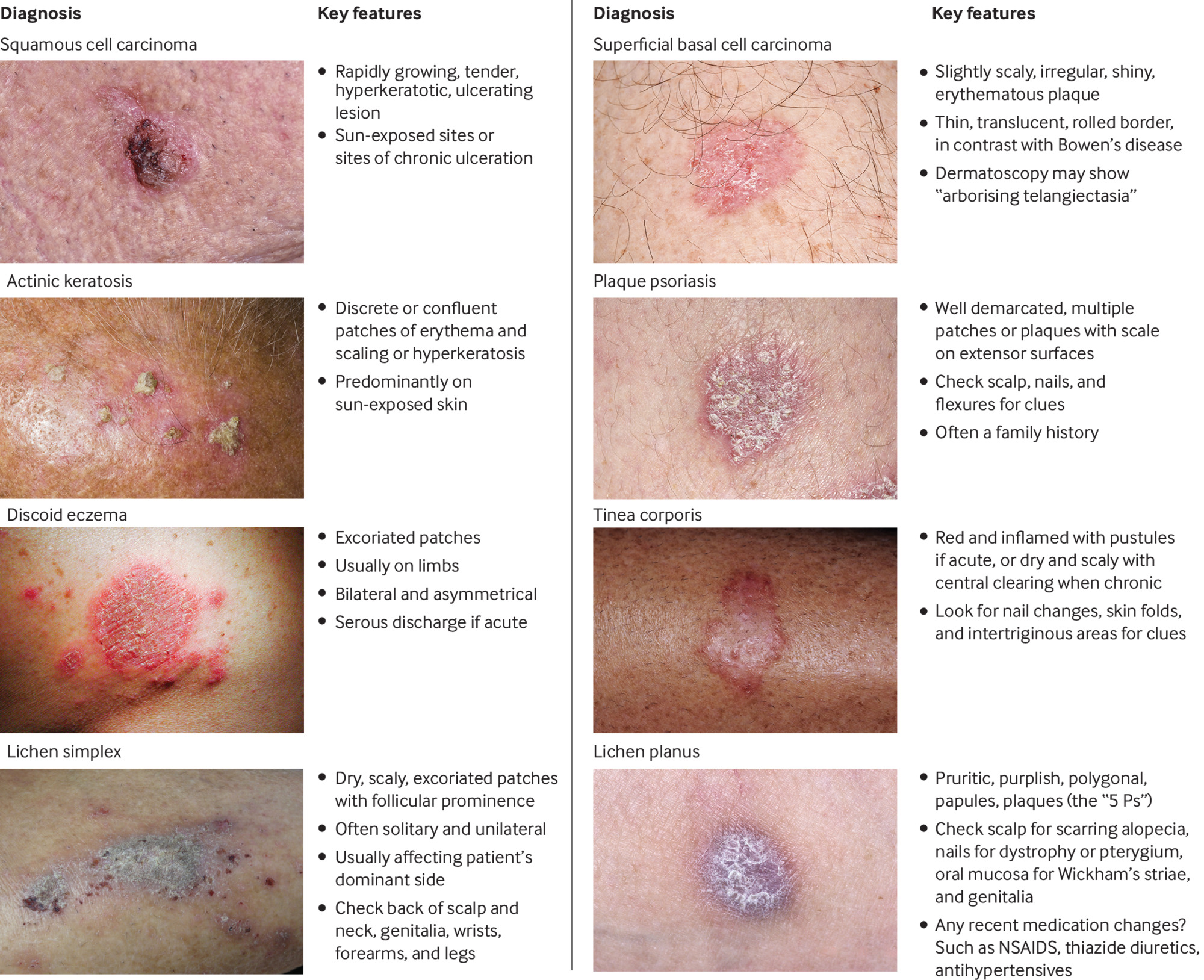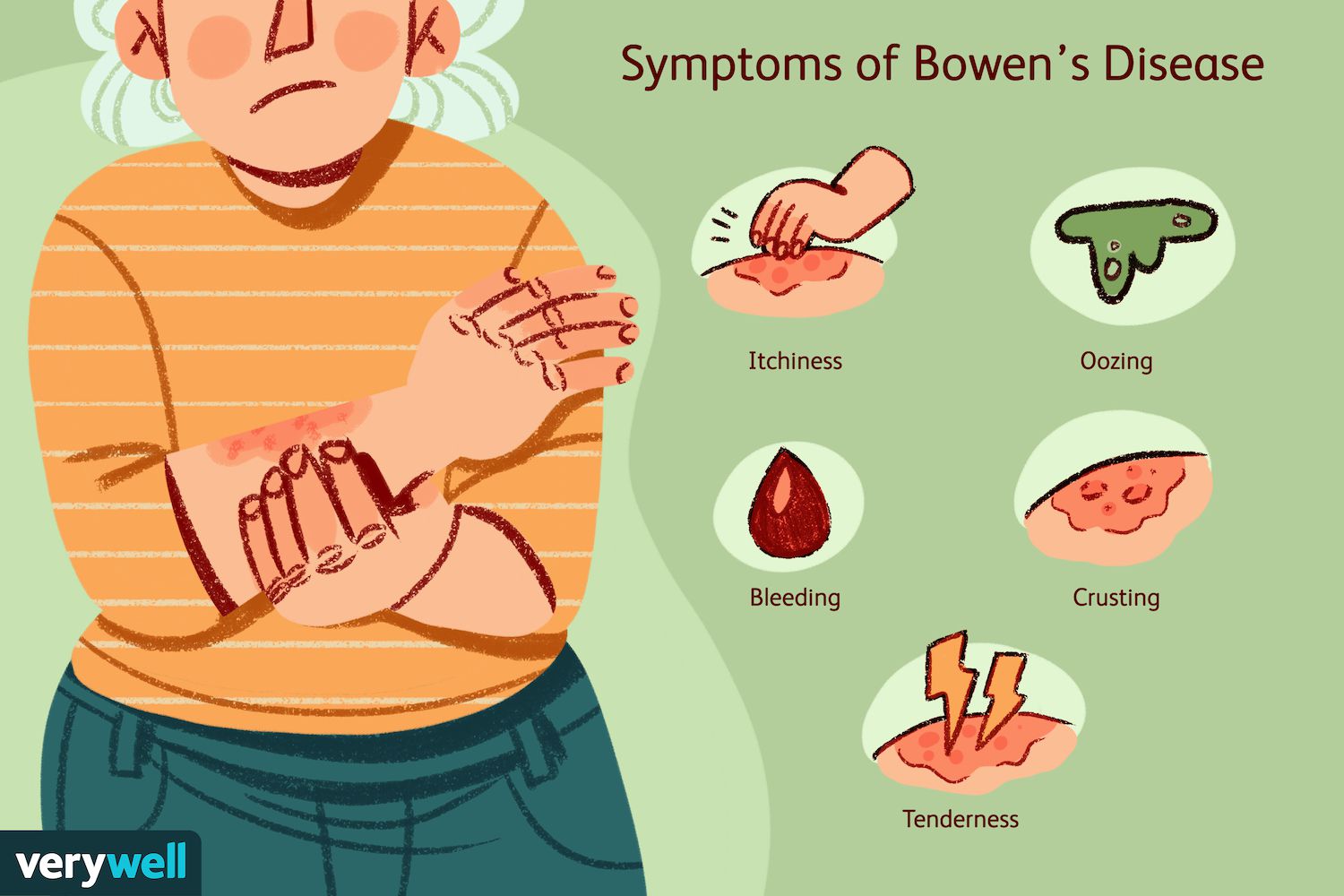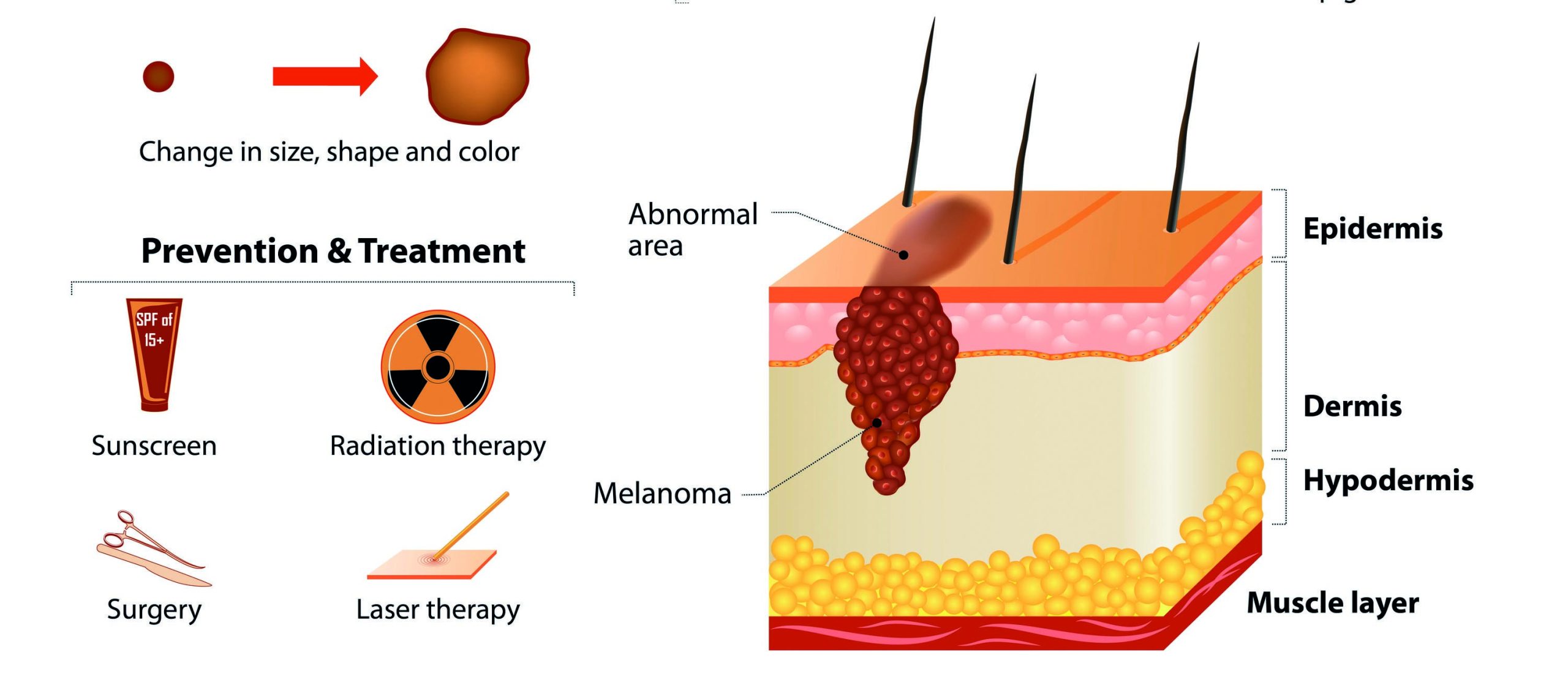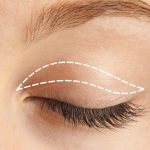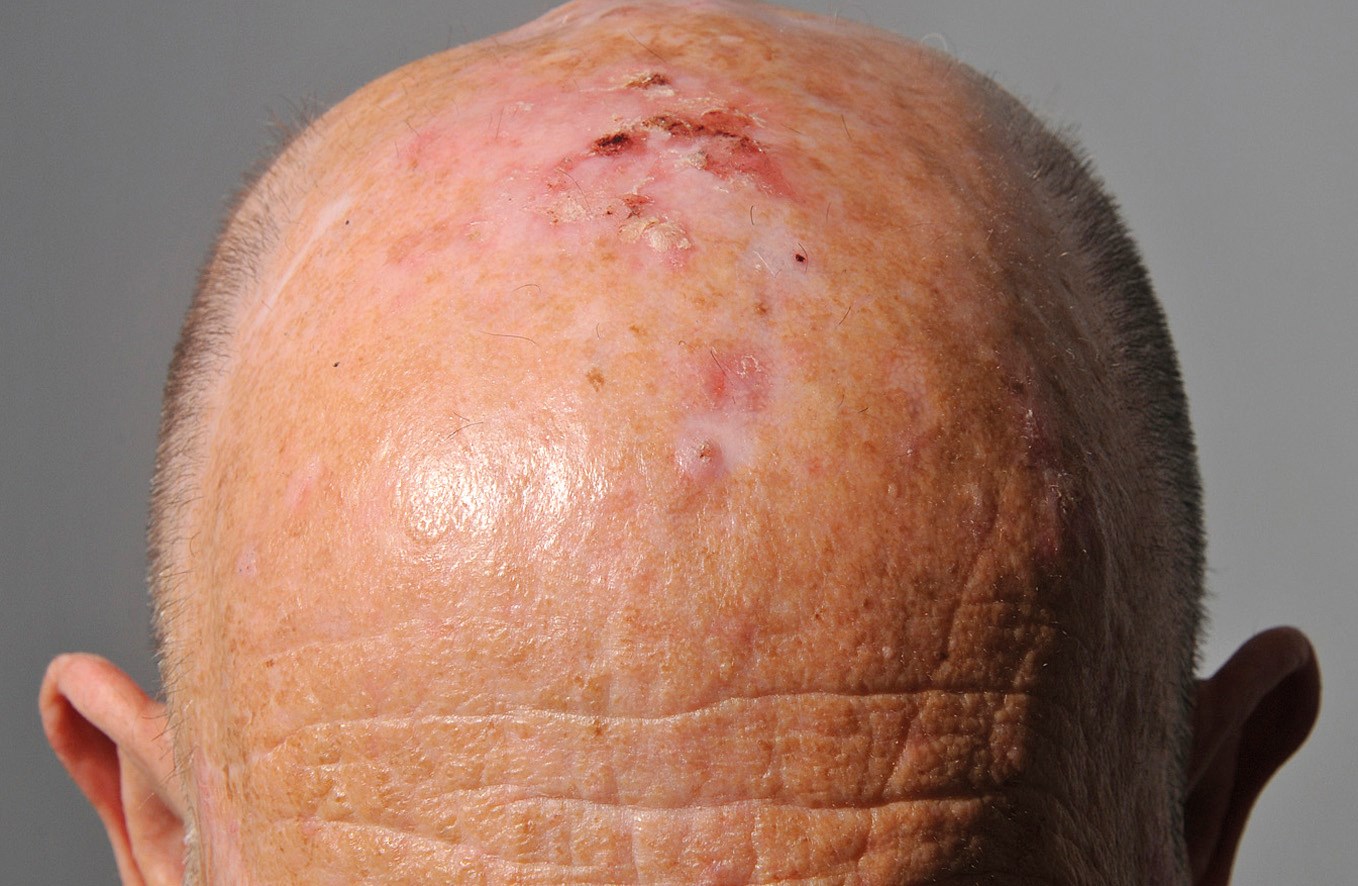
What is Bowen’s disease?
Bowen’s disease is a very early form of skin cancer that hasn’t spread beyond the top layer of skin. It is also called squamous cell carcinoma in situ. It is not usually serious and there are good treatments available, but don’t ignore it since there’s a small chance it can spread and become a more serious form of skin cancer.
Bowen’s disease develops in the epidermis, the outermost layer of skin. It can develop anywhere on the body, but it’s most common on the trunk, arms or legs. It can also appear on the lips, inside the mouth, or around the genitals or anus.
What are the symptoms of Bowen’s disease?
Bowen’s disease usually looks like a patch of red, scaly skin that grows slowly over time. Sometimes the patch may be raised and look sore, or it can look like a wart or a dark brown patch in the genital area. The patch is often itchy.
What causes Bowen’s disease?
Exposure of the skin to sunlight causes a vast majority of Bowen’s disease cases. The condition is also more common in people infected with the human papilloma virus (HPV), those with suppressed immune systems, and people who have been exposed to arsenic or radiation. People with Bowen’s disease often also have other forms of skin cancer such as basal cell carcinoma.
When should I see my doctor?
If you notice a new or changing mole, freckle or spot, you should see your doctor. They will examine you and, if necessary, they will refer you to a dermatologist (a skin specialist).
How is Bowen’s disease diagnosed?
Bowen’s disease can be diagnosed by investigating how the patch of skin looks and behaves, but you will often need a biopsy to confirm it. This is when a small sample of tissue is removed to be examined in a laboratory.
How is Bowen’s disease treated?
There are many ways to treat Bowen’s disease. Because it is such an early cancer, it can very likely be cured.
The best type of treatment for you will depend on the size and thickness of the Bowen’s disease, where it is on your body, your age and health, and your preference. Treatments include:
- Freezing it off: Liquid nitrogen is sprayed onto the patch of skin to freeze it. It will scab over and fall off after a few days. The procedure can be a little uncomfortable.
- Chemotherapy cream: A medicine such as 5-fluorouracil or imiquimod is put on the patch regularly for a few weeks. The skin often gets red and inflamed before it gets better.
- Curettage and cautery: You are given a local anaesthetic before the patch of skin is scraped away and then heat or electricity are used to stop any bleeding.
- Photodynamic therapy (PDT): A cream that reacts to light is spread on the patch of skin and then a laser is shone on the area a few hours later to kill the cancer cells. This may need to be repeated.
- Surgery: The patch is cut out under local anaesthetic. You may need stitches afterwards.
Sometimes, Bowen’s disease comes back after treatment, so it’s important to go to follow-up appointments with your doctor or dermatologist.
Living with Bowen’s disease
If you have had any type of skin cancer, it’s very important to protect yourself from future sun exposure. You should also have your skin checked by a doctor at least once a year.
